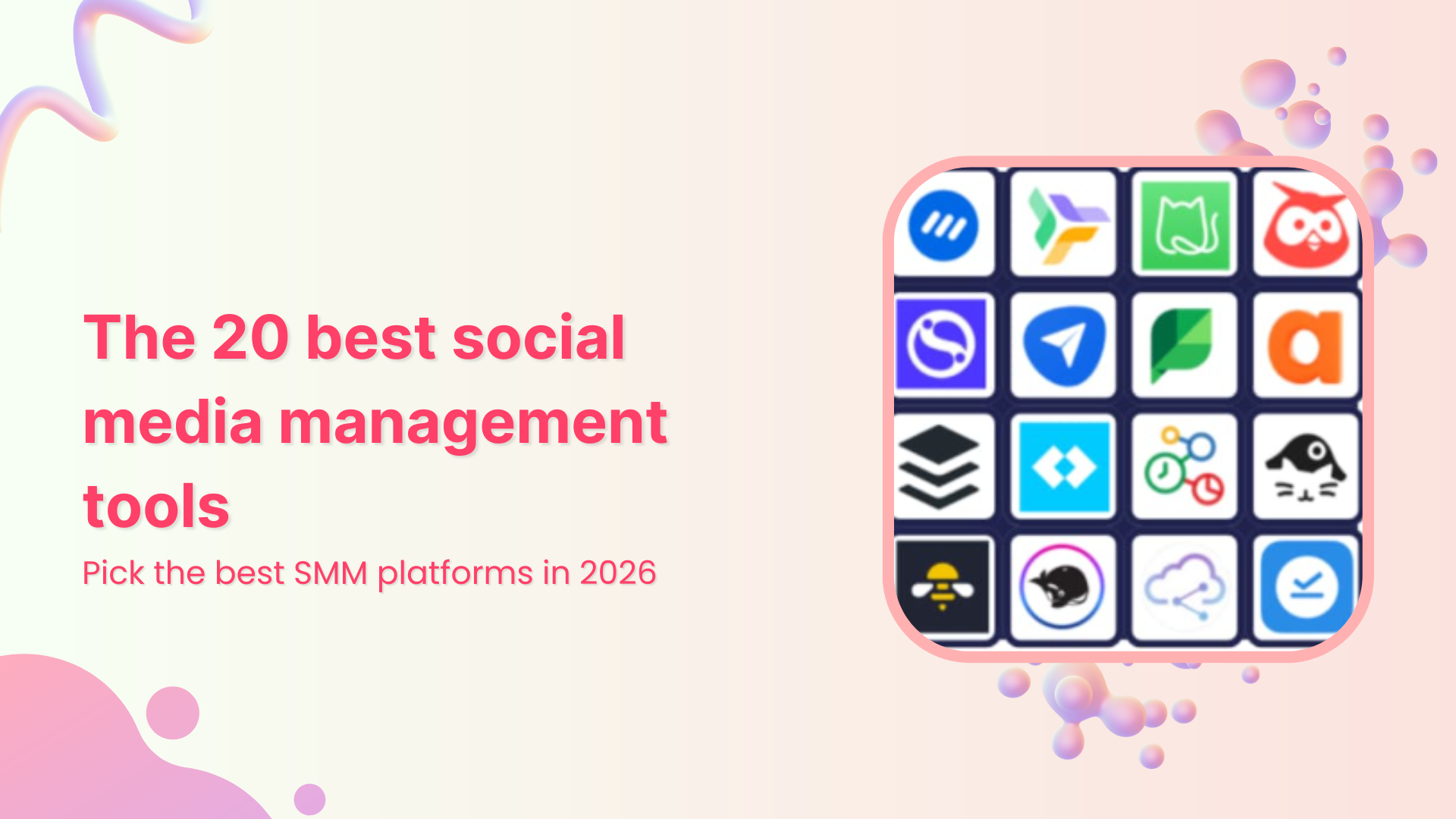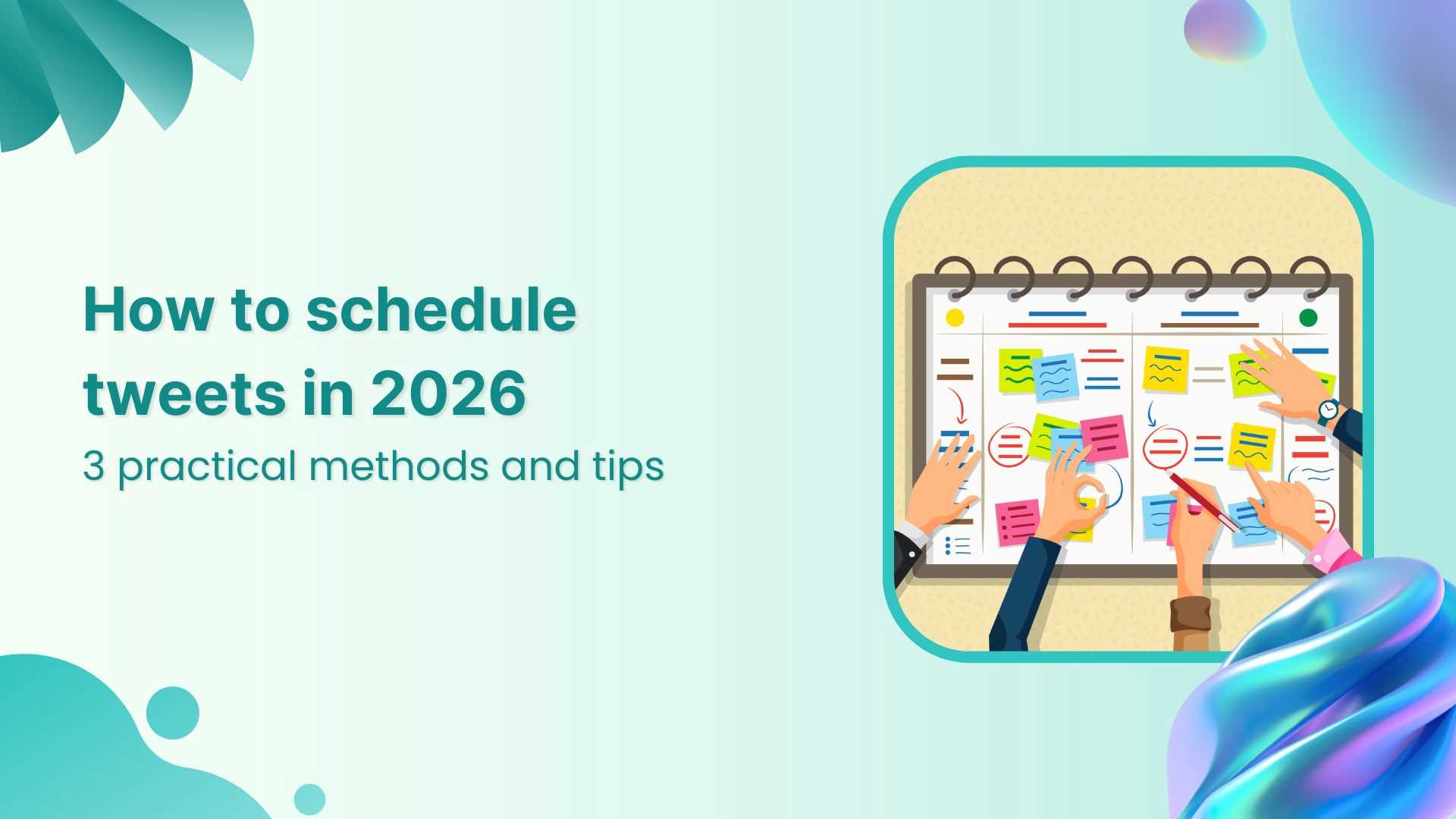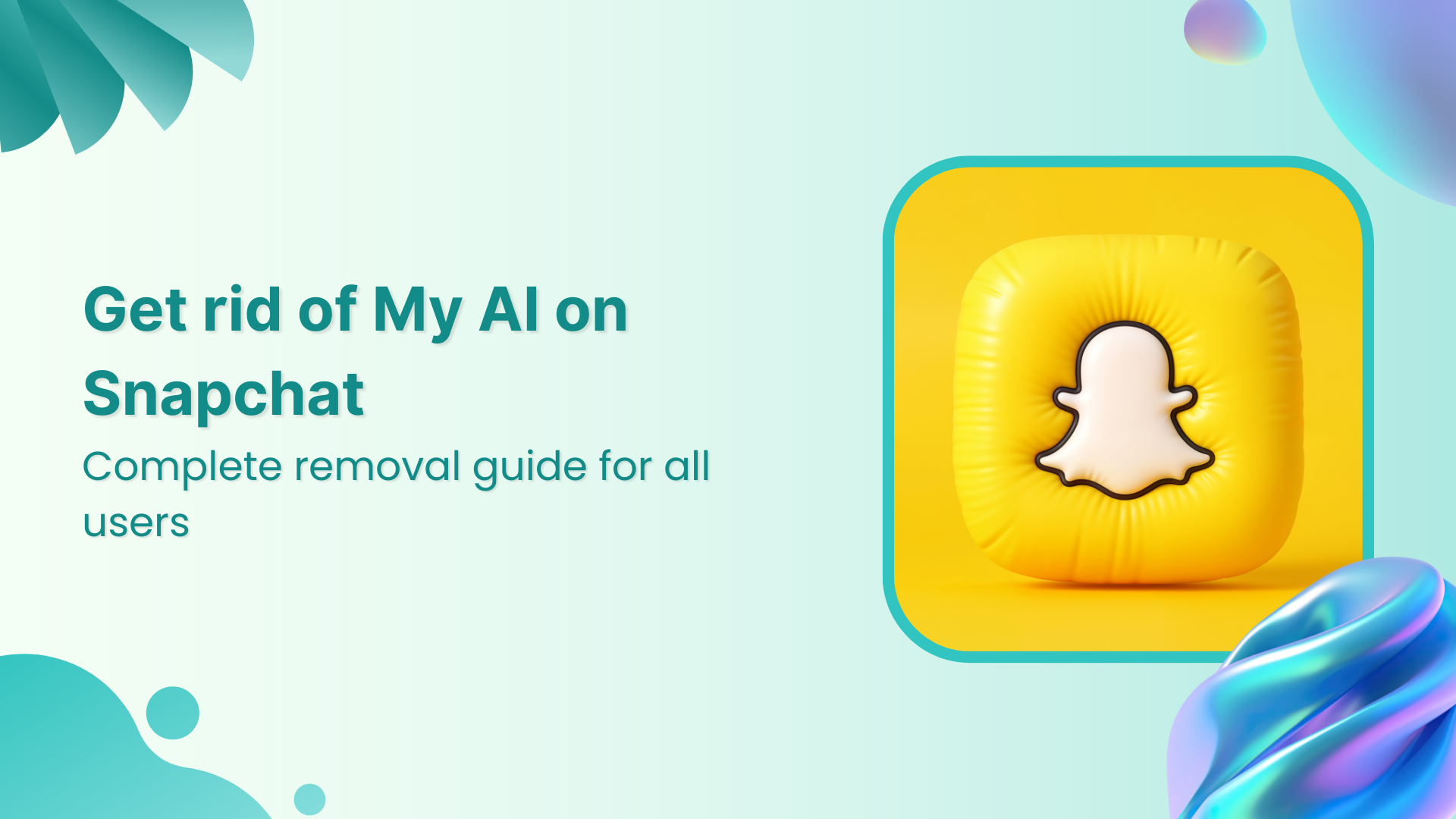Bulk-generate & schedule posts in seconds with Smart Scheduling. Try now!
How to measure brand awareness in 2026: Metrics & KPIs
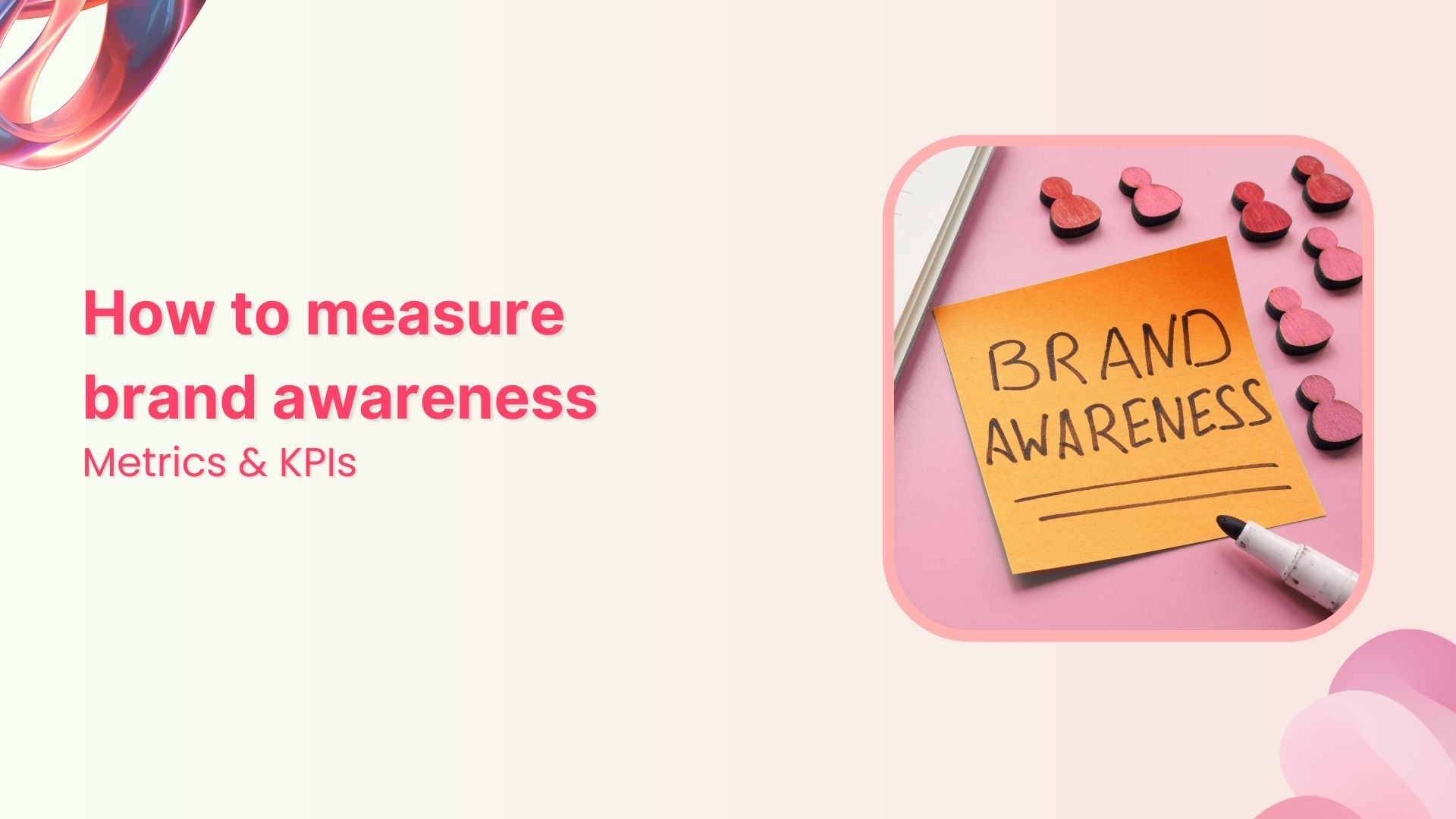
Learning how to measure brand awareness is not optional but a necessity to thrive in competitive spaces. Why? simply because slapping your logo on a billboard just doesn’t cut it anymore. The era of social media commerce requires extensive branding efforts to ensure your target audience is actually familiar with your brand.
Brand awareness metrics set the foundation of your entire marketing strategy, influencing everything from customer acquisition costs to long-term revenue growth. But in 2026, with countless platforms, touchpoints, and audience segments to consider, measuring brand awareness has become both more critical and more complex than ever before.
So how do you cut through the noise and figure out if your brand is actually making an impact? Let’s explore the actual brand awareness metrics and KPIs that matter.
What is brand awareness?
Brand awareness essentially means how familiar your target audience is with your brand. It’s that moment of recognition when someone sees your logo, hears your name, or encounters your product and immediately knows who you are and what you stand for.
Fun fact: Coca-Cola is often cited to be the world’s most famous brand, as over 94% of the population recognizes its iconic white and red logo.
The concept of brand awareness can be divided into two different layers:
1. Brand recognition, which means people can identify your brand when they see it.
2. Brand recall, which involves people remembering your brand without any prompts.
If someone’s scrolling through their social feed and stops at your post because they recognize your style, that’s recognition. If they’re looking for a specific type of product, and your name pops into their head? That’s recall, and it’s gold.
The stronger your brand awareness, the more likely people are to choose you over competitors, recommend you to others, and become loyal customers.
Also read: How can you be authentic on social media?
Why should you measure brand awareness?
You wouldn’t launch a rocket without checking the fuel gauge, right? The same logic applies to your brand.
Measuring brand awareness gives you concrete evidence of whether your marketing efforts are actually working or just burning through budget.
Validates marketing investment
Every dollar you spend on marketing should be accountable. When you measure brand awareness metrics, you can directly connect your campaigns to actual brand growth. Did that influencer outreach move the needle? Is your content strategy reaching new audiences?
The numbers will tell you, and more importantly, they’ll help you justify (or adjust) your marketing budget.
Also read: How to set up a social media budget?
Reveals competitive positioning
When you are managing a brand, you are likely to have many questions, such as:
- Where do you stand in your industry?
- Are you gaining ground on competitors or losing visibility?

Brand awareness measurement shows you exactly how you are performing against your competitors. Maybe you’re crushing it on Instagram but invisible on LinkedIn. Such intel is valuable to help you adjust or reshape your entire strategy.
Predicts future revenue
Here’s something most people miss: brand awareness is a leading indicator of sales. People need to know you exist before they can buy from you. By tracking how your awareness grows in specific segments, you can forecast which audiences are most likely to convert in the coming months.
Optimize campaign targeting
Not all brand awareness is created equal. When you measure it across different channels, demographics, and regions, you discover where your message resonates most. Maybe your witty X/Twitter presence crushes it with millennials but falls flat with Gen Z on TikTok. These insights help you double down on what works and pivot away from what doesn’t.
Why tracking brand awareness KPIs is necessary?
Tracking brand awareness KPIs is necessary for a variety of reasons. First of all, you should know you can’t just “feel” your way to brand success. Gut instincts certainly have their place, but in 2026, data-driven decisions separate the brands that thrive from those that barely survive.
Moreover, tracking brand awareness KPIs is vital to convert abstract concepts into actionable insights. Instead of wondering whether your brand is growing, you’ll know it. These KPIs become your north star, guiding every strategic decision from content creation to partnership opportunities.

But here’s what makes KPIs truly powerful: they create accountability.
When you set specific brand awareness targets, such as increasing unaided brand recall by 15% or doubling social media mentions in six months, your entire team has something concrete to work toward.
Plus, consistent KPI tracking reveals trends you’d otherwise miss. That subtle dip in brand searches? It might signal an emerging competitor. The spike in negative sentiment? Time to address a customer service issue before it snowballs. KPIs are your early warning system and your success scoreboard rolled into one.
How to measure brand awareness?
When it comes to learning how to measure brand awareness, you should know that there are multiple approaches to get the complete picture. It is like assembling a puzzle to see what’s really happening with your brand.
Here are the key methods you can use to measure brand awareness:
Social media analytics and listening
This is where tools like ContentStudio become invaluable. Social media analytics goes beyond just counting mentions, but it’s about understanding the conversations happening around your brand across the entire social media ecosystem. Social listening also helps you get answers to questions like:
- What are people saying about you when they think you’re not listening?
- Are the conversations positive, negative, or neutral?
So, it is important to use social media listening tools to set up monitoring for your brand name, product names, key executives, and even common misspellings. Don’t forget to track your competitors, too. The insights you gather from social listening reveal not just awareness, but sentiment, pain points, and opportunities you never knew existed.
Brand mentions and reach
Every time someone mentions your brand online, whether on X, a blog post, or a Reddit thread, it’s a data point. Tools that aggregate these mentions across platforms give you a real-time pulse on your brand’s visibility.
But don’t just count raw mentions; analyze the reach of those mentions. A single mention from a major influencer with 500K followers carries more weight than dozens of mentions from small accounts.
Direct surveys
Sometimes you just need to ask people directly. Brand awareness surveys can measure both aided and unaided recall. Unaided questions like “Which top hoodie brands can you name?” reveal pure brand recall. Aided questions show recognition when prompted. Run these surveys quarterly to gather audience insights and track progress over time.
Search volume data
How often are people searching for your brand name? Tools like Google Trends, Ahrefs, or SEMrush reveal the search volume for your branded keywords over time. Consistent growth in branded searches is a clear indicator that more people are aware of and interested in your brand.
Engagement metrics
People don’t engage with brands they don’t know. Track your entire social media traffic, including likes, comments, shares, saves, and clicks across all your social platforms. Growing engagement rates, especially from new followers, indicate expanding brand awareness. When using a social media management tool like ContentStudio, you can monitor these metrics across all platforms from one dashboard.
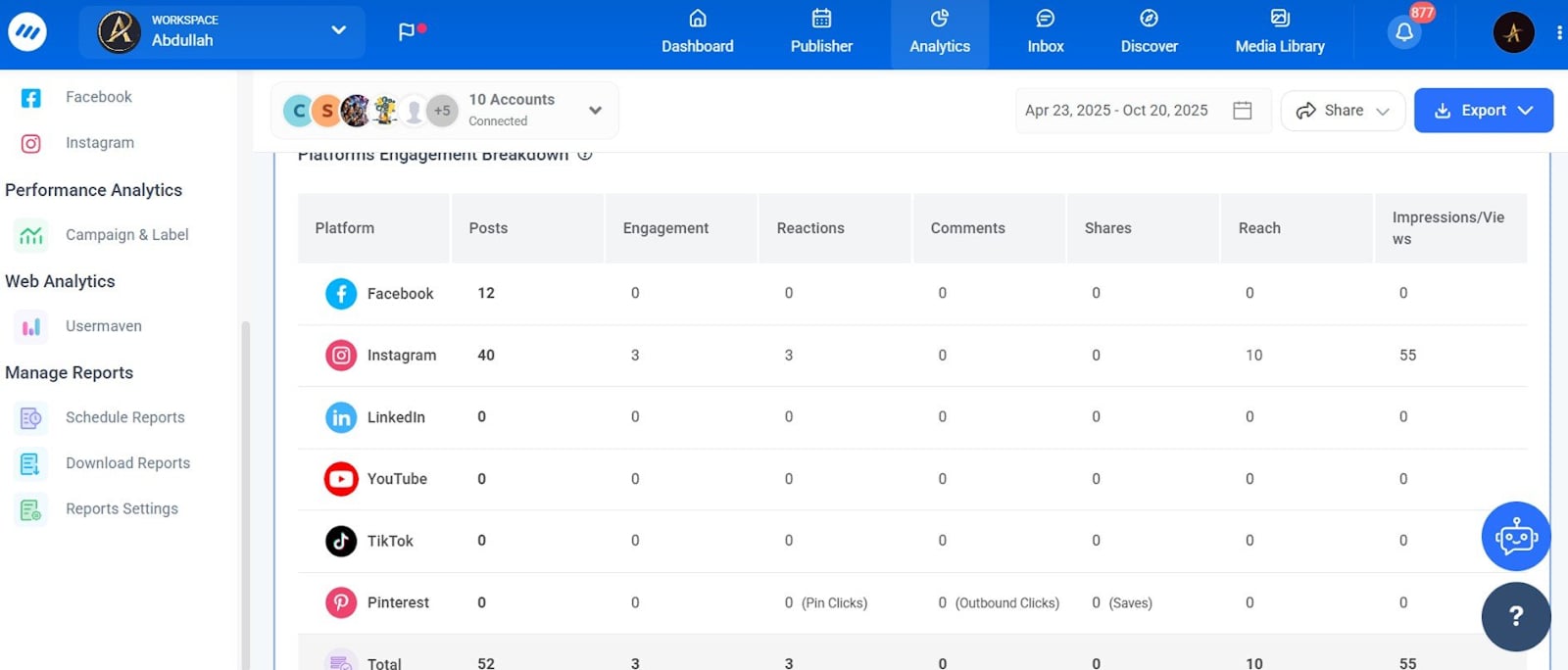
12 metrics to measure brand awareness
Ready to get specific? Here are the twelve metrics that should be on your radar in 2026. These are measurable, trackable, and actionable brand awareness KPIs that top brands use to gauge their visibility.
1. Branded search volume
This is the number of times people search for your brand name, products, or related branded terms. It’s one of the purest indicators of brand awareness because it shows intent that people are actively looking for you.
You should track both exact match searches (your brand name) and variations (common misspellings, abbreviations, or related phrases). A growing trend in branded searches means your awareness campaigns are working. Use Google Search Console and keyword research tools to monitor these numbers monthly.
2. Social media reach
Reach measures how many unique users see your content across social platforms. Unlike impressions (which count total views, including multiple views from the same person), reach tells you how many individuals you’re actually exposing your brand to.
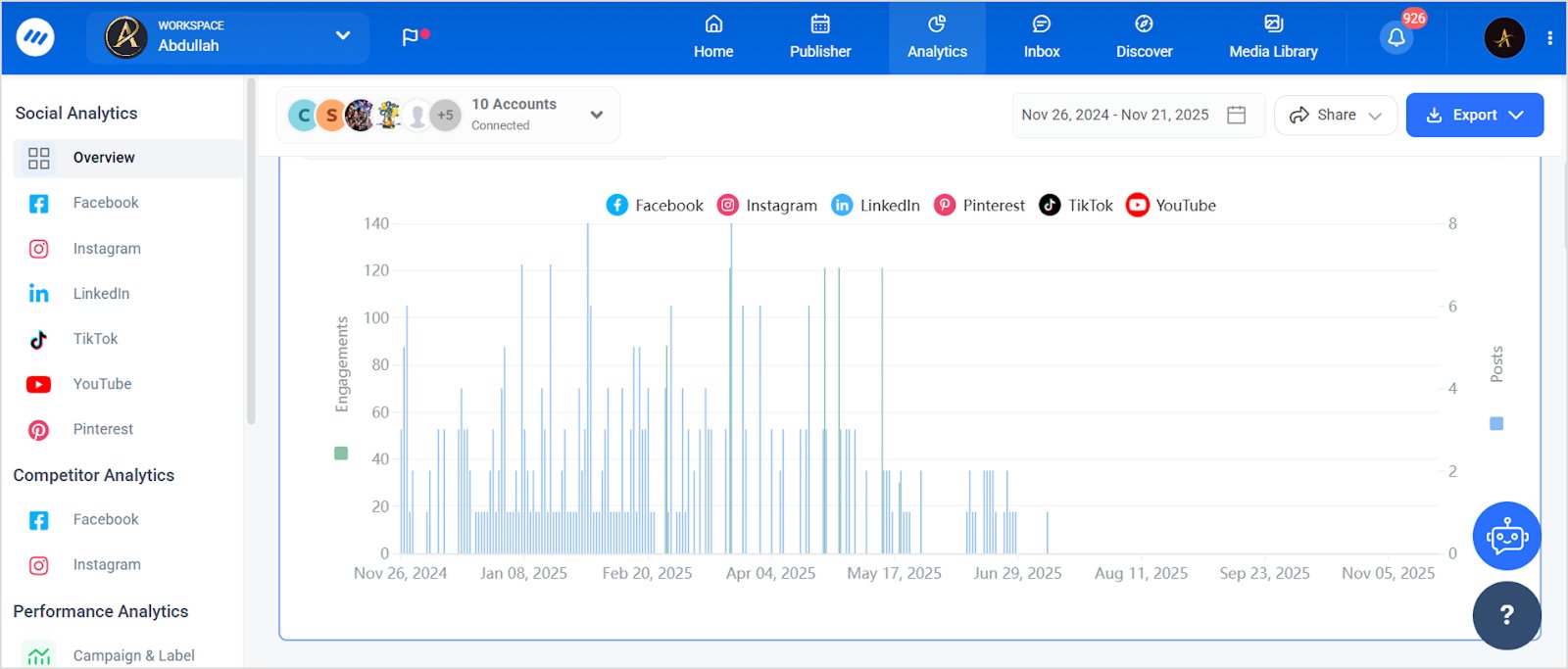
You can further expand your reach by posting consistently, using relevant hashtags, and using platform-specific features like Instagram Reels or LinkedIn articles. ContentStudio’s scheduling features help you identify when your reach is highest and optimize posting times accordingly.
3. Website traffic
Your website analytics tell a story about brand awareness. Look at
- direct traffic (people typing your URL directly)
- branded search traffic (searches containing your brand name)
- returning visitor rates.

An increase in direct traffic often signals growing brand awareness, as it means people remember you well enough to come straight to your site. Monitor both overall traffic and specific segments that indicate brand awareness. A healthy brand attracts both new and returning visitors.
4. Share of voice
Share of voice calculates your brand’s visibility compared to competitors in a given market or conversation. If there are 10,000 social media mentions about clothing brands this month, and 2,000 mention your brand, you have a 20% share of voice.
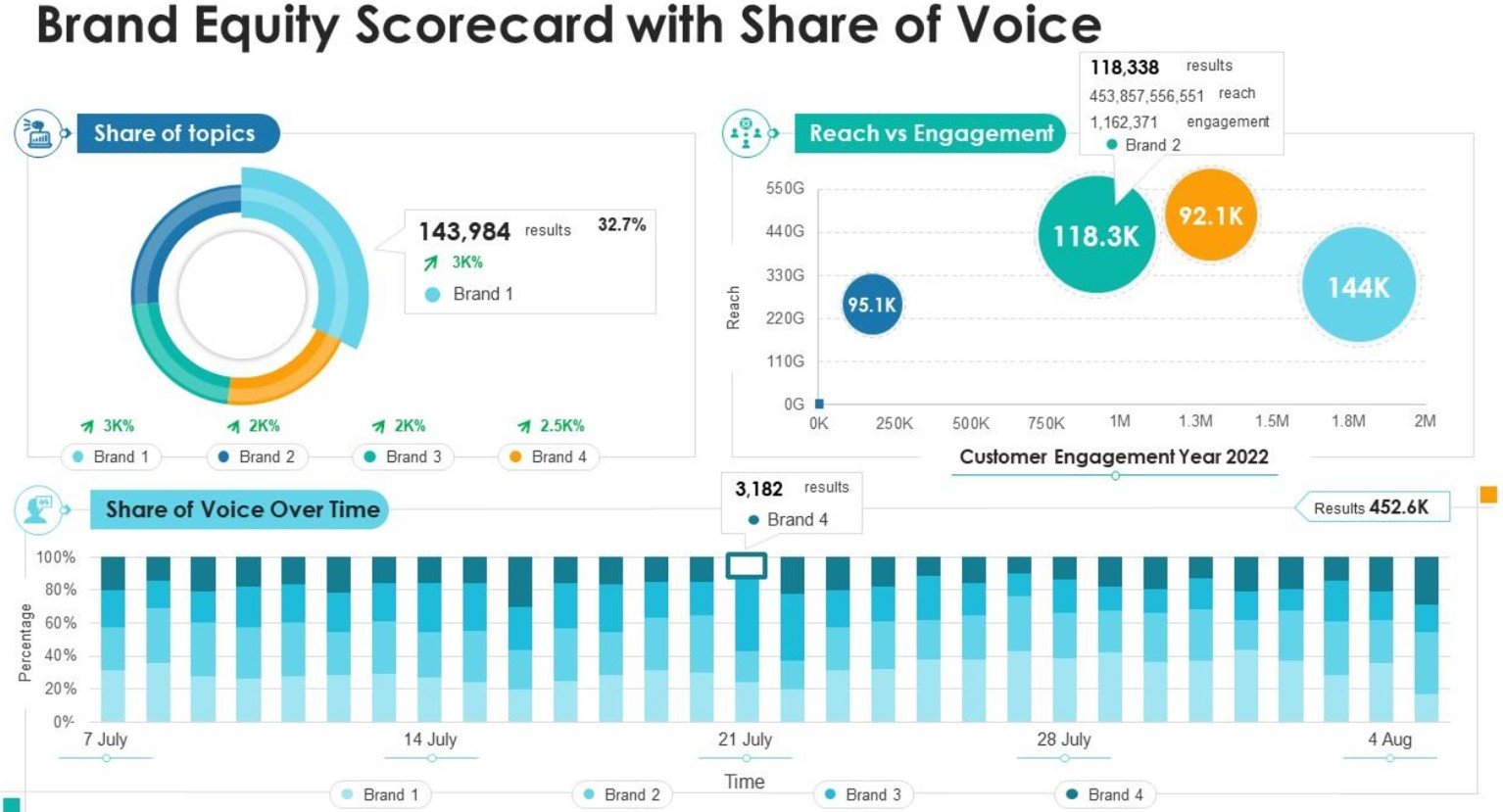
Track this across different channels, including social media, news coverage, blog mentions, and podcast appearances. A growing share of voice means you’re dominating more of the conversation in your industry.
5. Mentions and tags
How often is your brand mentioned or tagged on social media? This metric goes beyond just social media mentions, as it also includes screenshots of your products, discussions about your brand without tags, and any other reference to your company.

Monitor both volume (how many mentions) and sentiment (are they positive, negative, or neutral?). A spike in mentions after a product launch or campaign is great, but make sure those mentions are saying what you want them to say.
Also read: How to positively handle negative comments on social media?
6. Engagement rate
Engagement rate measures how people interact with your content relative to how many people see it. It includes likes, comments, shares, saves, and clicks divided by reach or impressions.

A high engagement rate suggests a strong brand connection, showing people don’t just know you; they care enough to interact. Different platforms have different average engagement rates, so benchmark against industry standards.
7. Follower growth rate
Your follower count matters, but the growth rate matters more. Are you adding 100 followers per week consistently? Experiencing exponential growth? Or plateauing?

Calculate your follower growth rate by taking the number of new followers in a period, dividing by your total followers, and multiplying by 100. Aim for steady, sustainable growth rather than spiky, inconsistent numbers that often indicate bot activity or viral flukes.
8. Brand recall metrics
This requires direct research, usually through surveys. Brand recall measures how many people in your target audience can name your brand without prompting. Ask questions like “Which social media management platforms can you name?” and see where you rank.
Conduct these surveys quarterly with a consistent sample size from your target demographic. Top-of-mind awareness (being the first brand named) is the holy grail because it means you’re the default choice in people’s minds.
9. Referral traffic
Which external sources are sending visitors to your website? Referral traffic from reputable sites, industry publications, or influencer blogs indicates that your brand is being mentioned and recommended across the web.
Use Google Analytics to identify your top referral sources. If you notice valuable referral traffic from particular sites or social platforms, double down on those relationships and content strategies.
10. Content virality metrics
How often does your content get shared beyond your immediate audience? You need to track shares, retweets, and forwards across platforms for this purpose. When your content spreads beyond your followers to their networks, you’re reaching people who might never have heard of your brand otherwise.
Look for patterns in what goes viral. Is it educational content? Behind-the-scenes glimpses? Controversial takes? Understanding what resonates helps you replicate success while staying authentic to your brand.
11. Press mentions and PR value
Traditional media still matters. Track how often your brand appears in news articles, podcasts, industry publications, and online media. Calculate the PR value by estimating what that coverage would have cost if you’d paid for equivalent advertising space.
Set up Google Alerts and use media monitoring tools to catch every mention. Don’t just count quantity, but also evaluate the quality and reach of each publication. A feature in TechCrunch or Forbes carries more brand awareness weight than dozens of mentions on small blogs.
12. Click-through rate from brand campaigns
When you run brand awareness campaigns, whether on social media, display ads, or search, track the CTR. A higher click-through rate indicates that your brand messaging resonates and creates enough interest for people to take action.
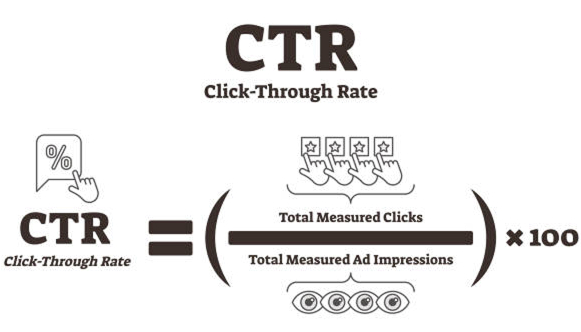
Compare CTRs across different campaigns, audiences, and platforms to identify what works. If your LinkedIn brand awareness campaign has a 4% CTR while Facebook sits at 1%, that tells you where your message lands most effectively.
Bonus tip: Use ContentStudio to run a successful brand awareness campaign
Simplified social media marketing for individuals & agencies.
Try ContentStudio for FREE
Now that you know how to measure brand awareness by focusing on the key metrics and KPIs, it is important to reiterate that a successful brand awareness campaign is possible when you execute your marketing strategies consistently across multiple platforms, and that’s where ContentStudio comes in.
Think about it: managing brand awareness campaigns across Instagram, Facebook, LinkedIn, Twitter, and TikTok simultaneously is exhausting when done manually. ContentStudio’s unified social media scheduling lets you plan and publish content across all your channels from one dashboard. So, you can schedule weeks of brand-building content in advance, maintain consistent posting schedules (crucial for staying top-of-mind), and ensure your brand voice remains cohesive across platforms.
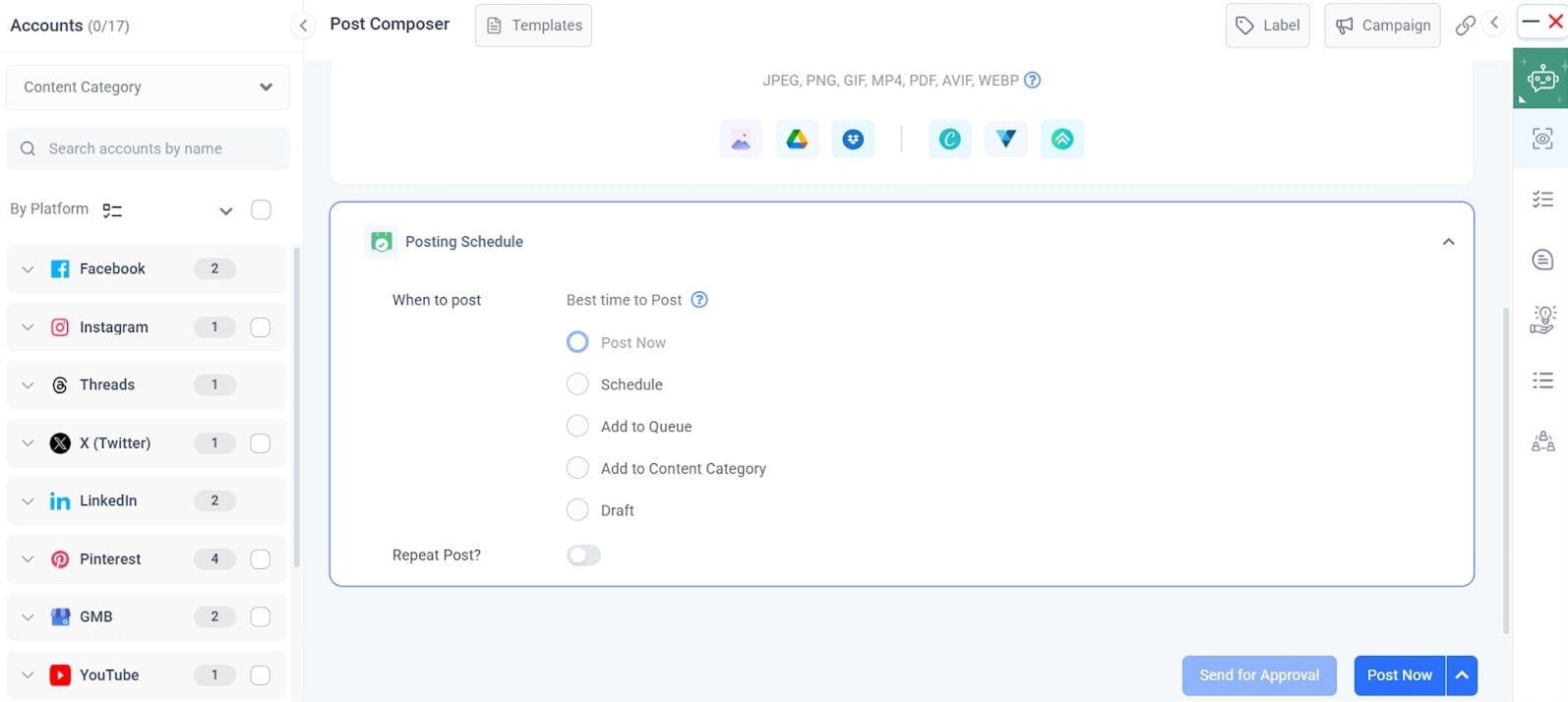
But scheduling is just the start. The real power lies in ContentStudio’s analytics. Remember all those brand awareness metrics we discussed? ContentStudio tracks them for you:
- Engagement rates across all platforms
- Reach and impressions to understand your visibility
- Brand mentions and conversations
- Follower growth trends over time
- Content performance insights to see what resonates
You can see which content drives the most brand visibility, which platforms deliver the best ROI, and which posting times maximize awareness.
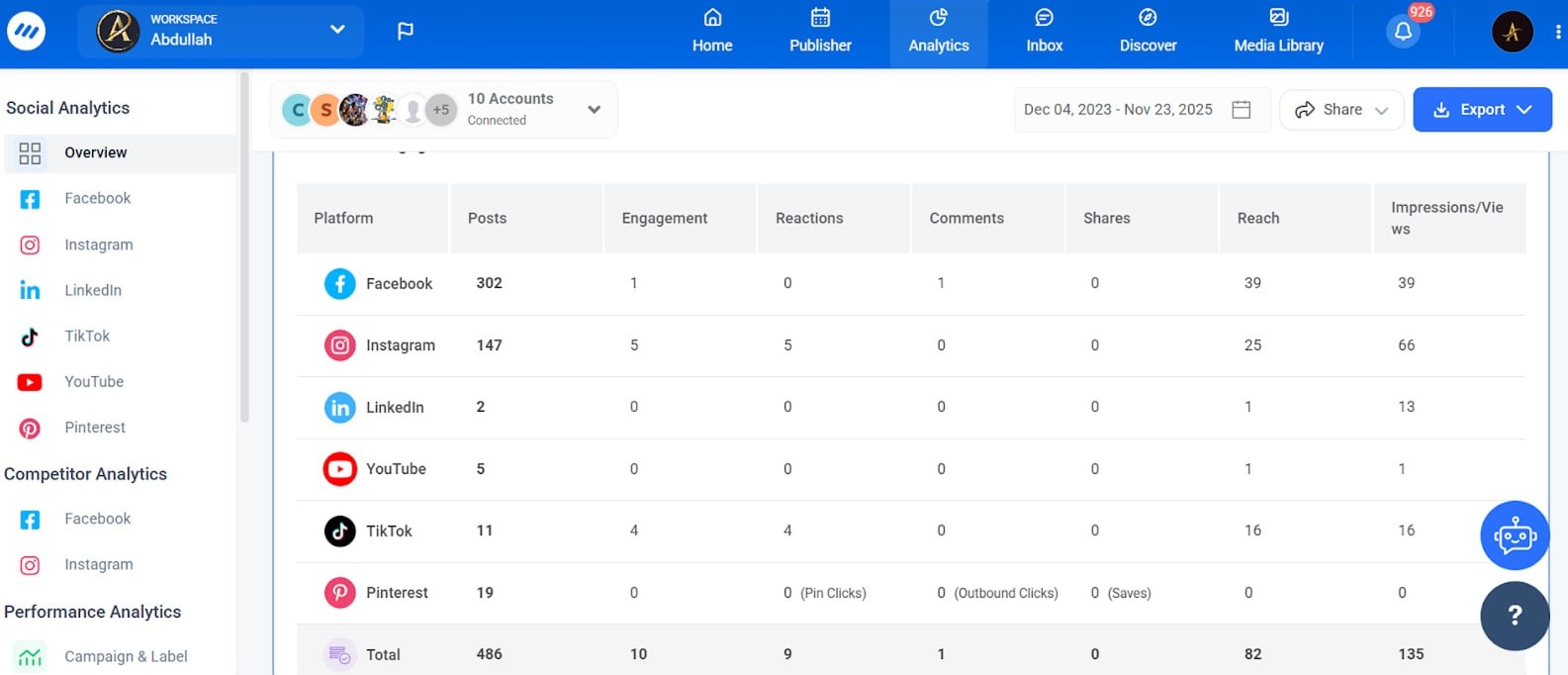
The detailed analytics dashboard gives you real-time insights into your brand’s social media performance. Compare campaigns side-by-side, track sentiment around your brand mentions, and identify trending topics your audience cares about. It’s like having a brand awareness measurement lab built into your social media workflow.
Conclusion
So, how to measure brand awareness in 2026? It’s not about picking one metric and calling it a day. It’s about building a comprehensive measurement framework that combines quantitative data, qualitative insights, and real-time monitoring.
The brand awareness metrics we’ve covered, ranging from branded search volume to social listening, from engagement rates to share of voice, work together to paint a complete picture of your brand’s visibility and reputation.
Each brand awareness KPI you track provides another piece of the puzzle, helping you understand not just how many people know about you, but who they are, where they found you, and what they think about you.
Remember that your brand awareness is not static, but it’s either growing or shrinking. The only question is whether you’re measuring it accurately enough to steer it in the right direction. Now that you know how to measure brand awareness KPIs, you should definitely start this process.
FAQs
What is the KPI for brand awareness?
There’s no single KPI to measure brand awareness. Effective brand awareness measures involve analyzing multiple metrics, including branded search volume, share of voice, social media reach, website traffic, and brand recall surveys.
How to scale brand awareness?
Scale brand awareness through consistent content marketing, strategic partnerships, influencer collaborations, paid advertising, SEO optimization, and active social media engagement. Focus on creating shareable content and expanding your presence across multiple channels where your target audience spends time.
How do you create brand awareness?
Create brand awareness by developing a strong brand identity, maintaining consistent messaging across all touchpoints, using social media platforms, producing valuable content, engaging with your audience authentically, and using both organic and paid marketing strategies.
What’s the difference between brand awareness and brand recognition?
Brand recognition is when people can identify your brand when they see your logo or hear your name. Brand awareness is broader, as it includes recognition plus brand recall (remembering your brand without prompts) and understanding what your brand represents and offers.
How to measure brand awareness?
Measure brand awareness using branded search volume, social media metrics (reach, mentions, engagement), website traffic analysis, share of voice, surveys for brand recall, referral traffic, and social listening tools. Combine multiple measurement methods for a comprehensive view of your brand’s visibility and reputation.
Recommended for you
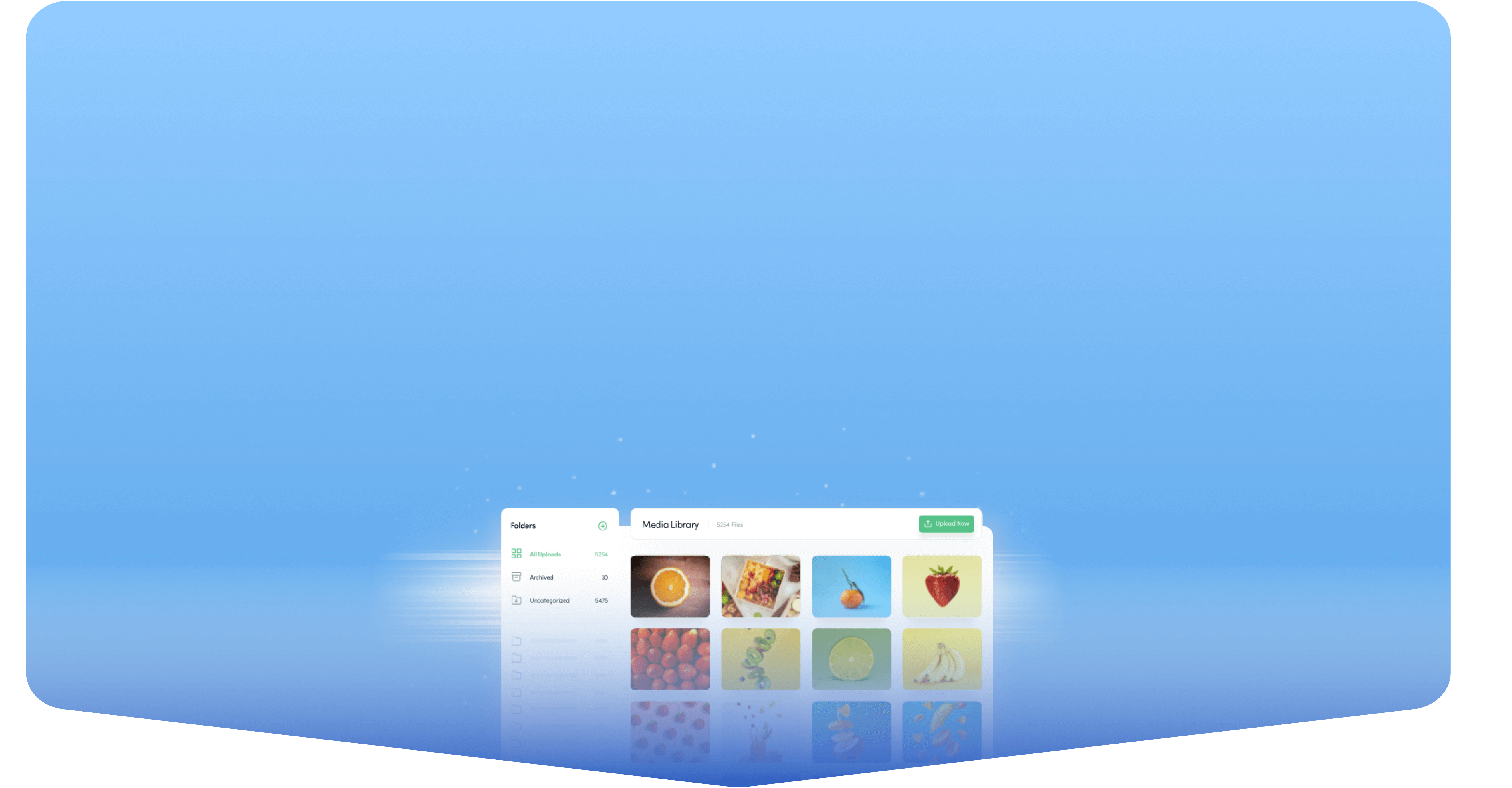

Powerful social media management software
14-day free trial - No credit card required.
